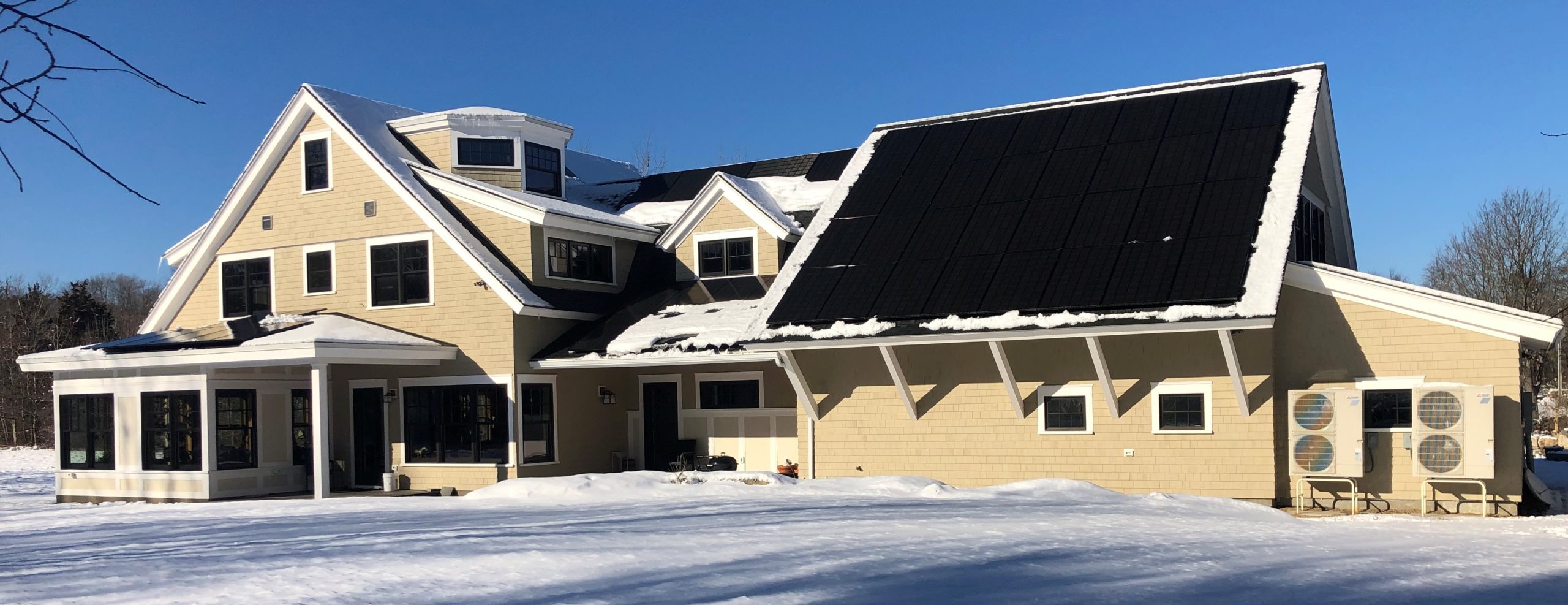It’s Important to Measure the Performance of Your Net-zero House. — I’m glad I did.

Measuring the performance (“EUI”) of your zero net-energy house is important. There is a saying, “You can’t manage what you don’t measure”. Without measuring, you don’t know how energy efficient your house is. Fortunately, I measured and found out my house wasn’t performing as expected. What did I measure? What did I find? And how did I fix the problem?
The standard metric to measure the performance of a net-zero house is to calculate the energy-use intensity (“EUI”). As a refresher as to what EUI is and how to measure it, click here. Ideally, the EUI for a zero net-energy should be below15, and definitely below 20. The EUI for THE HAYFIELD HOUSE is about 15, but I wish it was even lower.– I’ll explain why…
For an all-electric house, another easy metric to monitor is your electric bill. Ideally, an electric bill in a zero net-energy house should be zero. However, for the THE HAYFIELD HOUSE, even though the house is operating at zero net-energy, I still incur electric bills. For example, in 2024, my annual electric bill was $744. See my prior post which explains this billing paradox (and why my house ideally should have more insulation). — Anyhow, my EUI and energy bills for 2020 and 2021 seemed much too high as benchmarked against my prior house of about the same square footage. That prior house was not very airtight, and its insulation was only modest. To help determine what the problem might be, I took an on-line net zero course from Heat Spring. The instructor, Marc Rosenbaum was excellent and offered various software to model the energy use of a house. I applied Marc’s model to my house to calculate how large an air-source heat pump I would need to heat my house. The answer was that I needed a heat pump that was about one-half the capacity of the heat pump that had been installed.
My initial reaction was that I must have made a mistake in using Marc’s model. Not trusting my work, I asked Marc if my answer seemed correct based on the metrics of my house. Marc, having had many years of experience modeling energy performance of net-zero houses, immediately responded that my answer seemed reasonable and that the installed capacity of my heat pumps seemed high. Marc suggested that I look to see if my heat pumps were short cycling. Not being a heat pump expert, I asked Marc “What is short cycling”?
Short cycling is when a heat pump turns on for a short period of time and then immediately turns off, with this on-off cycling repeating. So I observed my air-sourced heat pumps in operation, and sure enough, the pumps were turning on for about 20 seconds and then turning off for about 20 seconds. This process kept repeating. This on-off cycle is very energy inefficient and is bad for the heat pumps. Note: I also noticed that this short cycling was more pronounced in the shoulder seasons (late fall and early spring) when the house only needs a small amount of heat. In that case, there is no need to pull from two heat pumps when pulling from one is more than enough.
In short, my heat pumps had been oversized by a factor of 2. This problem (as per Marc) is quite common as many installers are not experienced modeling the energy usage of net zero houses. The modelers tend to input assumptions into their energy models that are correct for a normal house but are incorrect for a highly insulated house with low air leakage. These less experienced HVAC installers frequently fail to catch their errors. Whereas Mark immediately caught the error.
Fortunately, the fix to my problem was quite simple, although not 100 percent ideal. — I merely determined which of my nine indoor heating/cooling units were connected to which of my two outdoor air-source heat pumps. Five of my indoor units are connected to one of my outdoor units, and four indoor units are connected to my other outdoor unit. All I needed to do was make sure that at any one time I was only using one (not both) of the outdoor units. The offline heat pump obviously couldn’t short cycle as it was offline. The ‘on’ heat pump was less prone to short cycling as the total demand for heat was being directed to that single heat pump. This stopped the short cycling and my EUI improved dramatically (improving from about 19 to about 15).
The only downside to this solution is that I need to manage the use of our in-door units, making sure I only turn on the ‘correct’ in-door units at any one time. This can lead to a few slightly cool spots in the house as ideally only some of the in-door units should be used at any one time. However, as the house is well insulated and airtight, we are not finding these few cool spots to be much of an issue. However, another owner might use the house differently and find this to be a problem.
The good news (I guess) is that if one of our heat pumps fails, we now have a backup, albeit an expensive backup.
The better design solution for the HAYFIELD HOUSE would have been to add even more insulation to the house and to reduce the air-leakage even further. That would allow a single heat pump to heat/cool the entire house with fewer cold spots. This design modification for THE HAYFIELD HOUSE would better align its design metrics with the published recommended building metrics of many other net-zero houses.
So the moral of this story is:
Sometimes two is not better than one.




[…] I also knew nothing about air-source hot water tanks that are used in many ZNE homes. That was OK,…